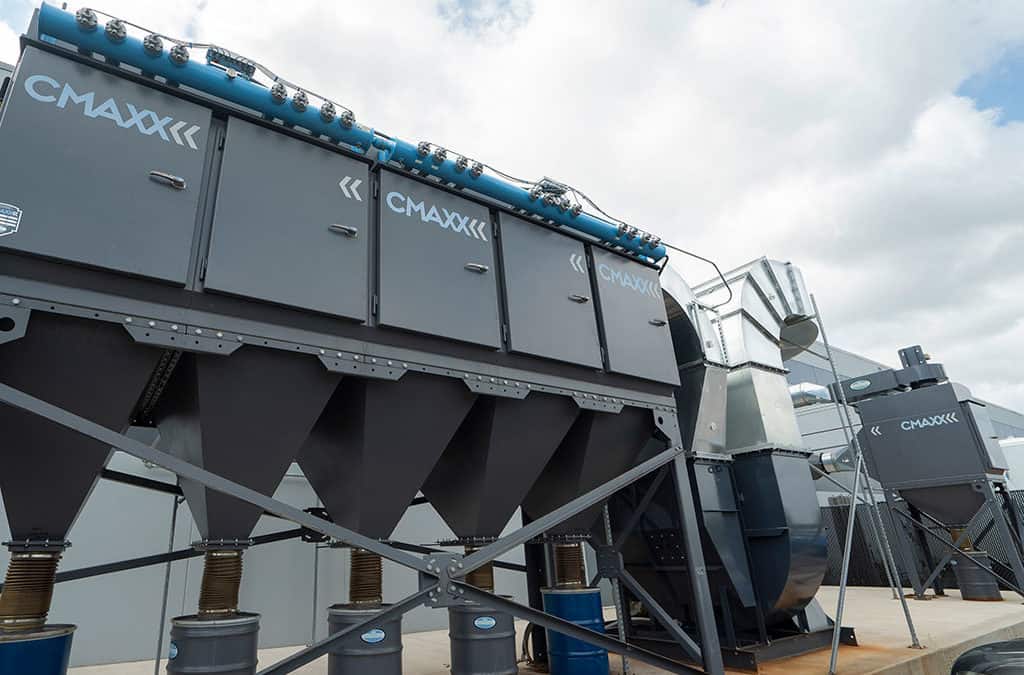
by Erin Long | May 8, 2019 | Case Studies
Problem:
James is the senior industrial engineer at a company in Kansas. Recently, the company bought a pipe plasma cutting machine. At the time, James knew that plasma cutting would produce a lot of smoke and that he needed a dust and fume collector.
James and some of his coworkers had visited another Imperial Systems customer who already has a CMAXX doing fume collection on a pipe plasma cutting application.
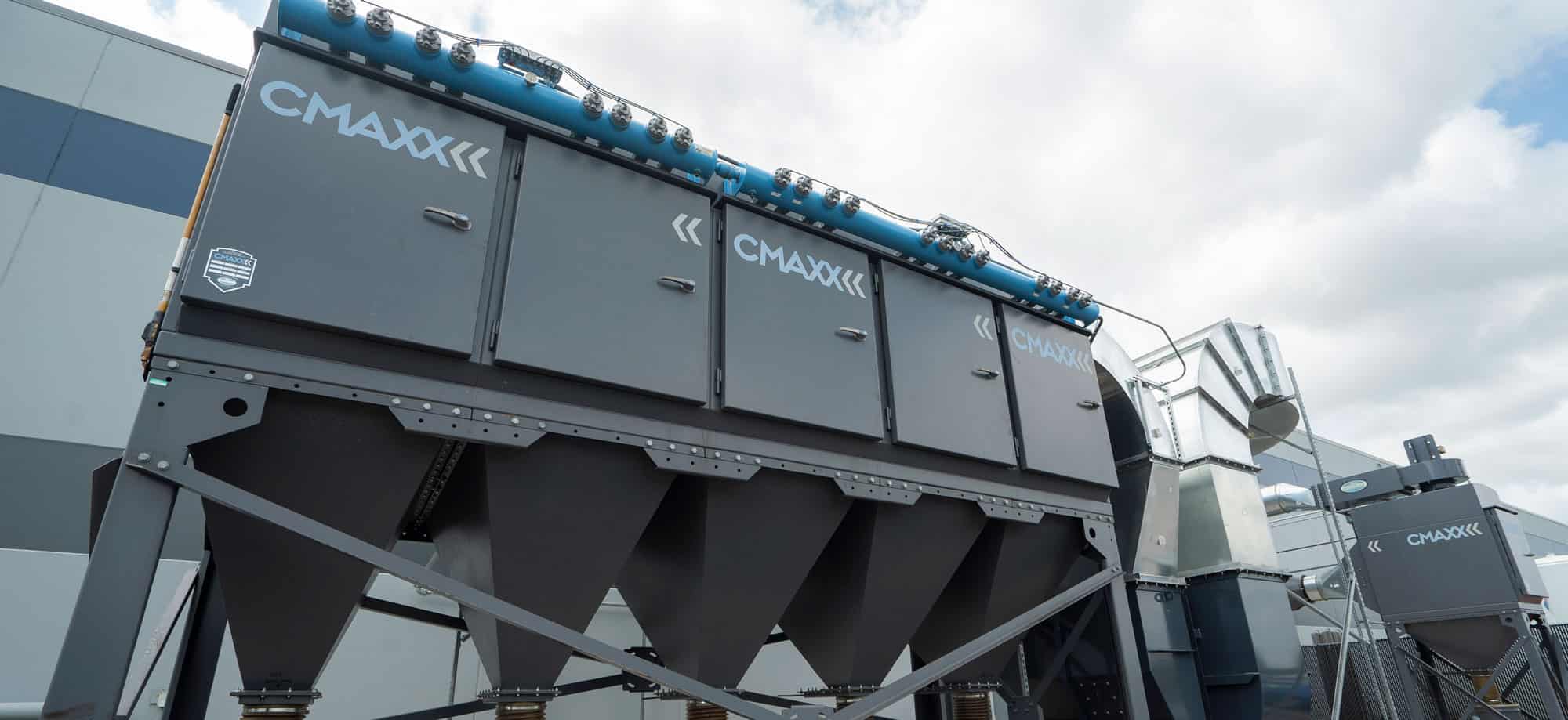
“They spoke really highly of you guys and your product, and even about buying the parts and filters,” James said. “That was certainly a big factor in choosing your company.”
Inquiring at Imperial Systems, James found himself working with salesperson Justin and engineer Troy to design a system for his application. Because he was warned about the amount of smoke a plasma cutter produces, he wanted to be prepared.
The new collector had to meet air quality standards and be able to capture the very fine smoke from plasma cutting. Imperial Systems provided the data showing that the CMAXX will do everything he needed it to do.
As for working with a company located in Pennsylvania while his company is in Kansas, James laughed. “Long distance relationships can be a little tricky, but we were able to work everything out. “
Pipe Plasma Cutting Solution:
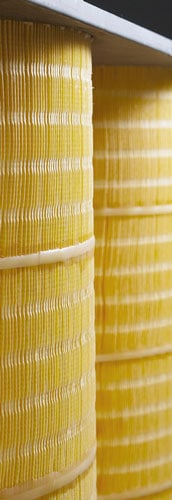 The solution that James and his team at Imperial Systems agreed on was a CM008, an eight-cartridge collector. To achieve fine particulate capture, the collector uses DeltaMAXX nanofiber filters suitable for plasma smoke. The importance of air quality control means that fume collection from the pipe plasma cutting machine needs to be completely under control.
The solution that James and his team at Imperial Systems agreed on was a CM008, an eight-cartridge collector. To achieve fine particulate capture, the collector uses DeltaMAXX nanofiber filters suitable for plasma smoke. The importance of air quality control means that fume collection from the pipe plasma cutting machine needs to be completely under control.
The new system performs as designed for fume collection for pipe plasma cutting. Some adjustments were made to the source capture point for cutting sheet metal, but the system is adaptable. As a result, by James being proactive with getting dust and fume collection for his new equipment, he prevented any air quality issues.
Feedback:
“The guys from Imperial System worked with me and were very helpful,” James said. “We also really like your hats. The guys in the shop love them. So we asked for more hats and Justin sent us more. But there still weren’t enough, though. The guys want more hats.”
Somewhere in Kansas, there’s a shop full of guys wearing Imperial Systems hats. We’re proud that our CMAXX, our service, and our hats have proved themselves in the field once again.
Read our white paper on plasma cutting smoke.
Read more about plasma cutting fume extraction.
Read more
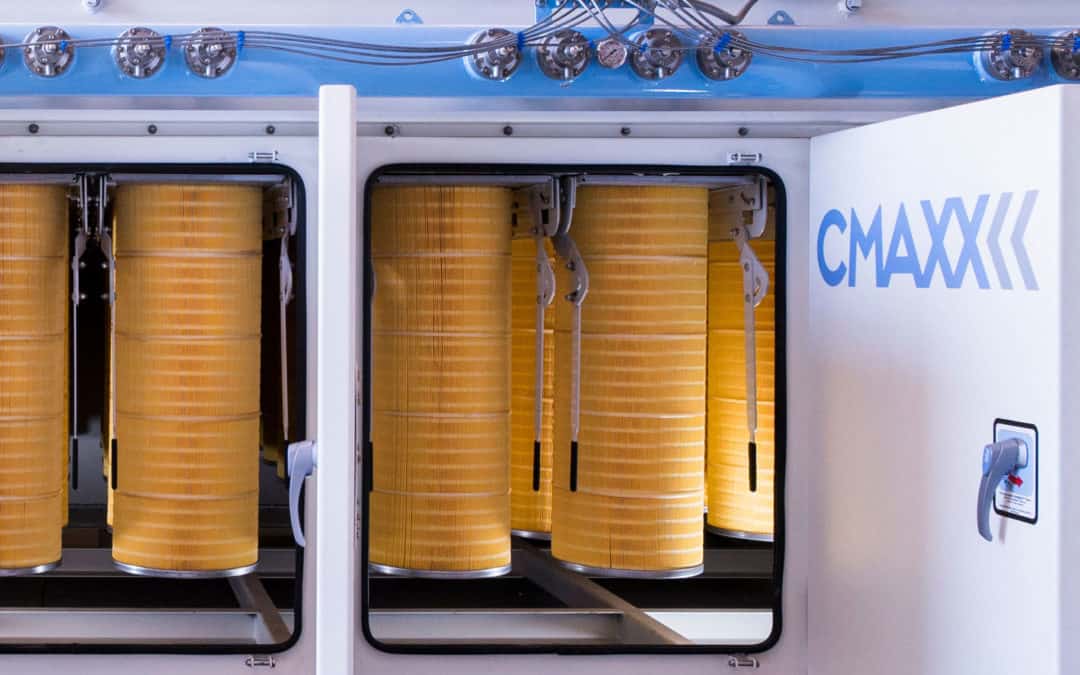
by Erin Long | May 3, 2019 | Uncategorized
In honor of Air Quality Awareness Week, we’re focusing on environmental air quality, indoors and out. When talking about dust and fume collection systems, we often discuss OSHA regulations for exposure inside the building. However, EPA regulations on dust and fume control limit what can be released into the environment.
Air quality control inside a facility protects worker health. It also protects the facility from combustible dust hazards. The same hazardous dust and fumes that could harm workers inside, though, could also contaminate environmental air quality outside.
Metal Contaminants from Industry
Many industrial processes produce heavy metal contaminants. Many people think of foundries, mining, and steel mills when they hear about environmental air quality. However, fumes released from many processes can cause contamination in the environment. For example, metalworking, battery manufacturing, and smelting can be added to the list of potential polluters.
Metals that are dangerous in very small amounts include:
- Lead
- Arsenic
- Cadmium
- Mercury
- Chromium (hexavalent chromium)
- Nickel
- Zinc
- Copper
Very fine metal particles produced by industrial processes are the most harmful for environmental air quality. They can be carried for long distances in the air. Moreover, this means they may contaminate soil and water a long way from the source.
Many of these metals are known or suspected to cause cancer. Further, others like lead and mercury cause damage to the nerves and brain.
Some companies may not realize that their fumes include these metals. However, metals like steel can contain nickel, zinc, chromium, or other materials as alloys. These are good reasons to have a dust and fume collection system to protect workers at the facility… but what about the environment?
Dust and Fume Control for Environmental Air Quality
Removing dust and fumes from a building doesn’t make them disappear. These materials are harmful because they can remain floating in the air for people to inhale. They can also end up in water supplies or contaminate the soil.
All manufacturing companies are responsible for air pollution control in their facilities. To prevent air pollution from industrial processes, dust and fumes must be captured with air filtration. Dust collection systems serve double duty: they provide clean air inside the facility and trap harmful materials before they can get outside.
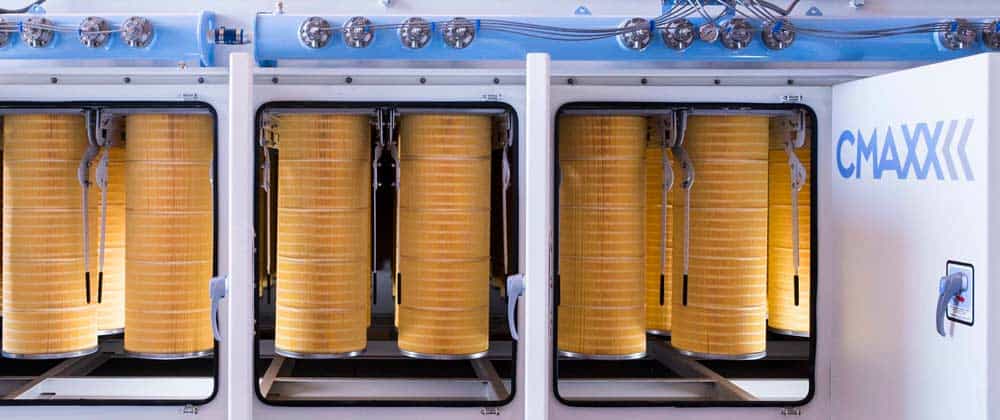
Part of preventing air pollution is the quality of dust collector filters. Filters need to be efficient enough to capture the smallest particulates the process creates. DeltaMAXX nanofiber filters capture particles as small as 0.3 microns, enough for most applications. If higher filtration is needed, HEPA after-filters can be used.
By capturing dust and fumes instead of blowing them outside, companies take responsibility for preserving environmental air quality. People who live and work near industrial areas need to be protected from harmful air pollution.
Maintaining environmental air quality improves people’s lives. Companies who invest in a dust and fume collection system can be proud that they are protecting their workers and protecting the environment. The “we just open the doors and blow it outside” philosophy might get dust and fumes out of the shop, but it passes the danger on to others. We are all responsible for what we put into the air, water, and soil around us.
Read more
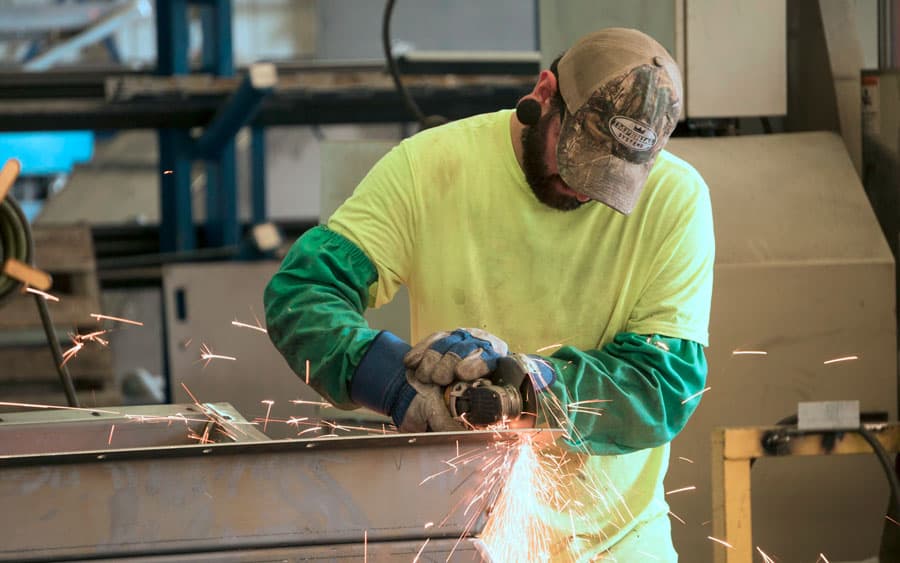
by Erin Long | Apr 30, 2019 | Uncategorized
An industrial fabrication shop like Imperial Systems needs its skilled tradespeople. When you see pictures of our facility, you see lots of welders and other metalworkers. These people are certainly the backbone of any fabrication company. But pictures don’t always do justice to the many other skilled trades needed to keep our business moving.

Skilled Trades: Metalworking in Our Fabrication Shop
Our company would not exist without our metalworkers and other skilled tradespeople on the shop floor. In other words, our dust and fume collection equipment would just linger as a pile of sheet metal. Some of the skilled trades at work in our fab shop are:
- Welders
- Grinders
- Machine operators
- Plasma cutting operators
- Powder coating
- Maintenance and repair
- Assembly
Repair and maintenance also include our constantly traveling ServiceMAXX teams. These teams perform everything from filter changes to electrical work.
Things also wouldn’t get far on the shop floor without the managers. These include the plant manager, production manager, supply chain manager, and shipping manager. They are very experienced and skilled people. Above all, they keep fabrication going smoothly and orders going out on time.
Before a job makes it out for fabrication, it goes through the engineering team. These professionals transform the system that the customer wants into instructions for the fabrication shop to build it. Then our skilled tradespeople turn a drawing into a CMAXX or a BRF.

Other Skills: Keeping Things Running Behind the Scenes
A fab shop needs more than skilled metalworkers and shop managers to function as a business. For example, our accounting team handles money going in, money coming out, and any issues in between. They make sure we all get paid, obviously an essential task. They also do double duty handling many human resources functions like benefits and new employee paperwork.
You might not think that a fabrication shop would need a software engineer. But a person with this skill is essential to keeping things running. Everything from sales to shipping relies on a working computer system. In addition to his programming work, our software engineer is always willing to help keep computers and servers running.
You’re probably not surprised that a metal fab shop needs a team of salespeople. Without their work, the shop might not have dust collectors to build. While salespeople don’t go to school to learn sales, there’s a lot of training that goes into being good at this trade.
Our equipment salespeople and aftermarket salespeople must be experts in our products. Equipment salespeople travel frequently to meet potential customers. Aftermarket salespeople maintain our good relationships with customers and help them solve problems.
All those product brochures and blog posts and logos don’t appear from nowhere, either. Graphics design experts are skilled tradespeople who create our brand’s image. Even an industrial fabrication company needs to look professional.
Our graphic design team works with the company content writer. She writes features like our company newsletter and articles published in magazines. Content writing is a mix of skills, including writing, researching, and optimizing website traffic.

Our Fabrication Shop: Many Skills, One Working Company
Our company needs a mix of skilled tradespeople and many other jobs. Industrial metal fabrication relies on its skilled trades metalworkers. Behind the scenes, though, there’s a team of other people working to keep the company running.
Get a professional degree, learn a skilled trade, or make your own career path. A company like ours has a place for you. Without our skilled tradespeople, products wouldn’t get built and our fabrication company wouldn’t exist.
Many industries, not just metal fabrication, owe much of their success to people in the skilled trades. From medical to construction to electronics, skilled trades drive industry. Remember: many supervisors, managers, and even company owners got their start in skilled trades!
Read more
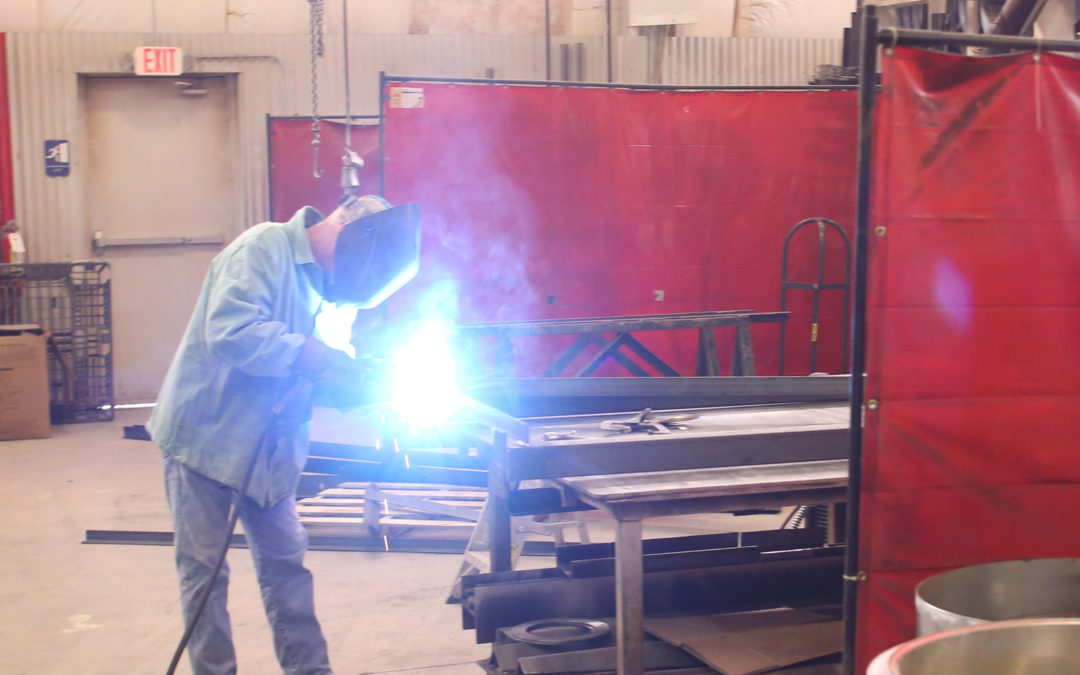
by Erin Long | Apr 24, 2019 | Weld Fume
Problem: Welding Ventilation
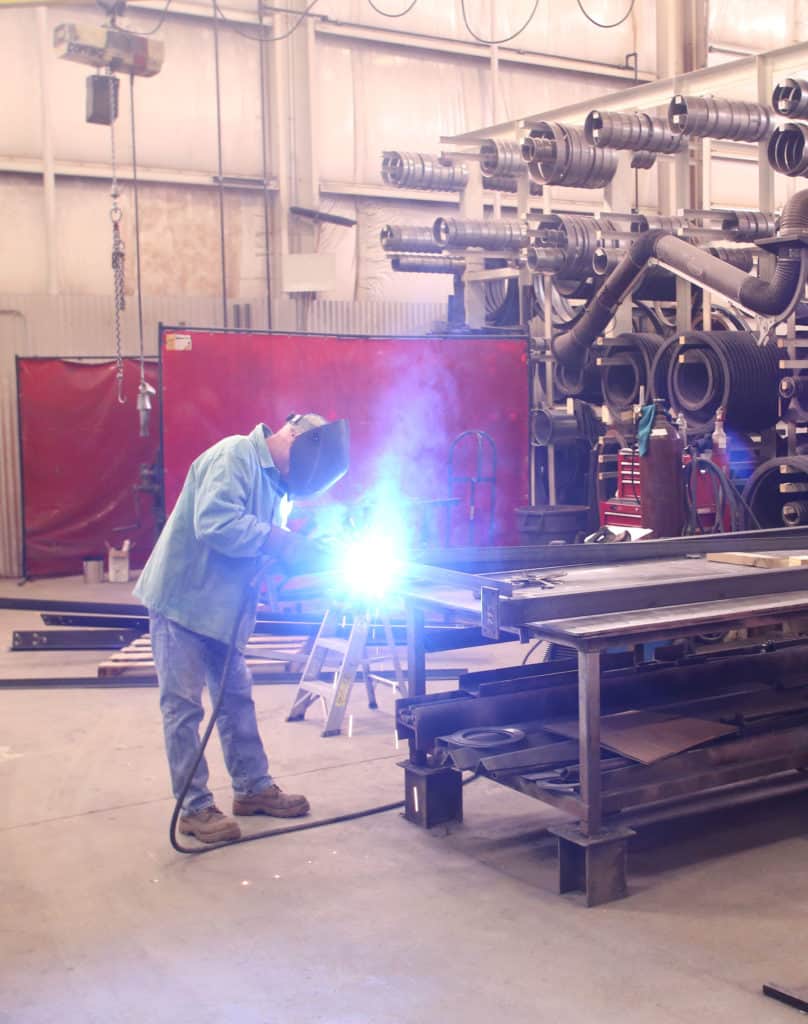
This company manufactures many types of metal parts for the power grid industry. They have several robotic weld cells and also a number of human welders. Between these two sources, the company produced a large amount of weld fumes. High production demand meant that the weld fume levels were a constant problem.
The company had a small fan moving air through the shop. Without proper welding ventilation, the fumes created a hazardous atmosphere in the workplace. Concerned about the safety of their workers, the company sought a solution to their weld fume problem.
Solution:
The company’s welding equipment dealer had worked with a company called Glacier Technology, Inc. The company contacted Glacier to design a welding ventilation system for their shop. The weld fume collector was an Imperial Systems CMAXX CM008. They laid out ductwork to provide direct ventilation to each area of the workplace.
The robotic weld cells had their own fume extraction hoods. In addition, an ambient system design provided clean air to the area where the human welders worked. Calibrating airflow to handle hoods and an ambient system together requires strong system knowledge.
The CMAXX arrived on time and as specified. Because the CMAXX is designed to be easy to install, the company was able to do the entire installation themselves. This took only one eight-hour work day and went smoothly.
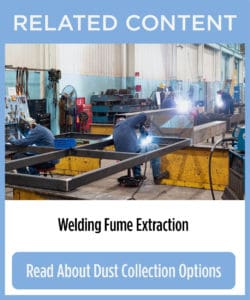 Feedback:
Feedback:
Tom from Glacier Technology returned to the facility soon after install to adjust the electrical systems. Upon arrival, workers expressed how pleased they were with the new welding ventilation system.
“It took about five minutes to start clearing the shop out,” one worker told him.
In fact, when Tom had to shut down the collector for a few minutes to make some adjustments, the shop immediately filled with fumes. The workers demanded that he turn it back on as soon as possible. As soon as he restarted the system, the fumes began to clear again.
The customer reports that they had a very positive experience working with Glacier Technology and Imperial Systems. They appreciated the design of the system, the prompt delivery and easy install, and the customer service they received.
Imperial Systems and Glacier Technology partner to provide customers with the best equipment, efficiency, and expert service.
Read more
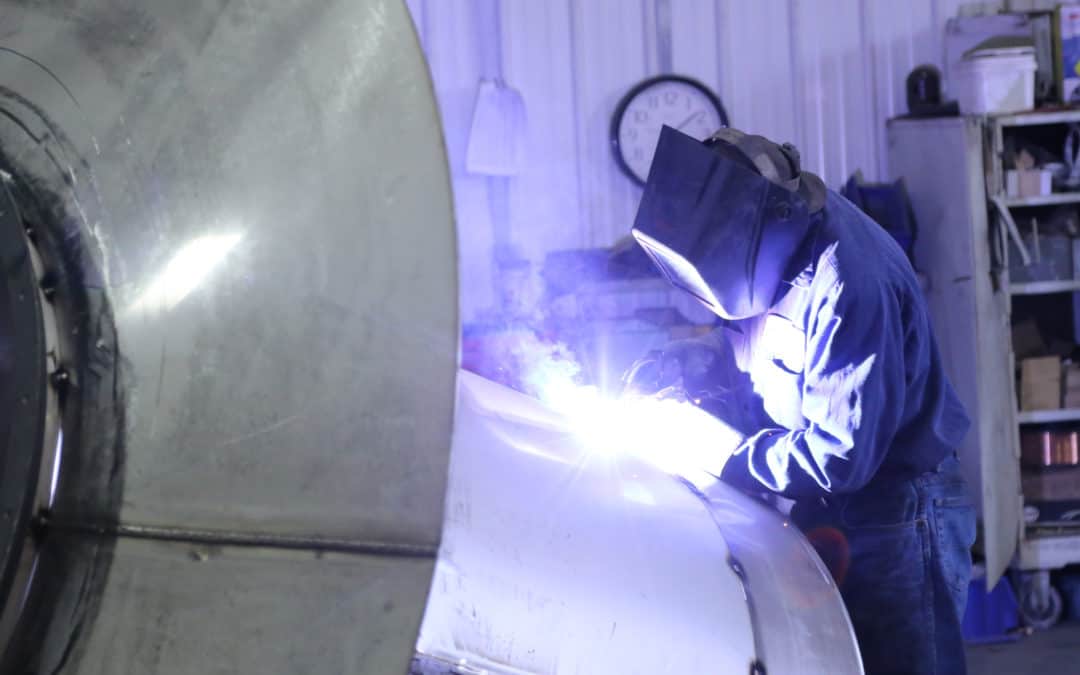
by Erin Long | Apr 17, 2019 | Weld Fume
Any of our competitors will sell you a weld fume collector, but how many of our competitors are welders themselves? We are proud to be a welding fume collection company. If you go out into our shop, you’ll see our CMAXX dust and fume collector right in the middle. It’s protecting a shop full of welders who are working on new dust and fume collectors.

Fume Collectors Welded, Not Bolted
While most of our competitors bolt the pieces of their dust and fume collectors together, Imperial Systems’ collectors are welded solid with no external bolt holes. Because our collectors are welded and not bolted, we understand welders’ fume collection needs. We know our weld fume collector works in the field because it works in our shop.
Our own welders test our fume collection system every day. The safety of our own employees drives us. As a welding fume collection company, our systems can’t just be good enough to sell to you. They must be good enough to put in our own shop.
Because our competitors do so much bolting and not so much welding, their systems don’t get put through the same test that ours do. If our fume collection system didn’t work for welders, our welders wouldn’t be happy with it.

By Welders, For Welders
The person who cares most about how a machine works is the person who uses it every day. For welders doing their jobs every day, a fume collection system needs to work. They care about their work environment and whether it’s clean and pleasant to work in. They care about their health and what they’re breathing.
As a welding fume collection company, it’s our responsibility to make products that welders like and trust. We always encourage and value feedback from our welders about ways our weld fume collectors could be improved. We know that if our own welders in our shop aren’t satisfied with the way our CMAXX works, people who purchase it for their own shops won’t be satisfied either.
Our welders are proud of the quality of their work. As a weld fume collection company we take pride in giving our welders the safest, most pleasant environment to work in. Our goal must always be the highest air quality possible.

What’s Wrong with Bolts
Why do we weld our fume collectors instead of bolting them together like the competitors? Bolting the panels together probably saves some time over the work of a skilled welder. When you’re choosing a weld fume collection company, however, quality beats cutting corners. Bolts can come loose, and bolt holes rust and allow water inside the collector.
As a solid welded piece with no external bolt holes, the CMAXX has no bolt holes to rust. The quality work of our welders produces the most durable, weather-resistant fume collector on the market. It allows us to offer the longest warranty in the industry.
Our competitors choose bolts over welding, probably because that’s how they’ve always done it. Some competitors, though, have started to copy our design, including the solid welding instead of bolts. Don’t fall for these CMAXX wanna-be products. The copycats will never be as good as the original. Many of these copycats aren’t even made in the USA and they don’t go through our most important test: the satisfaction and happiness of our own welders.
With NFPA standards on combustible dust, more and more dust and fume collectors are being located outside. This makes it easier and safer to vent an explosion, but it exposes the collector to the elements. After many years of rain and snow, bolt holes will show corrosion and rust. Unlike bolt holes, our welds don’t leave the metal weak to rusting.

Why We Do What We Do
We are a welding fume collection company because welders deserve to be safe and healthy at work. All welders, including those in our own shop, deserve the basic right to clean air in the workplace. Our welders test our weld fume collectors while they’re making them. Our shop relies on our systems to do a good job. If our own welders trust the product they build, that means you can trust it in your shop too. The CMAXX is a product built by welders, for welders, from our weld shop to yours.

Read more


 The solution that James and his team at Imperial Systems agreed on was a CM008, an eight-cartridge collector. To achieve fine particulate capture, the collector uses DeltaMAXX nanofiber filters suitable for plasma smoke. The importance of air quality control means that fume collection from the pipe plasma cutting machine needs to be completely under control.
The solution that James and his team at Imperial Systems agreed on was a CM008, an eight-cartridge collector. To achieve fine particulate capture, the collector uses DeltaMAXX nanofiber filters suitable for plasma smoke. The importance of air quality control means that fume collection from the pipe plasma cutting machine needs to be completely under control.













